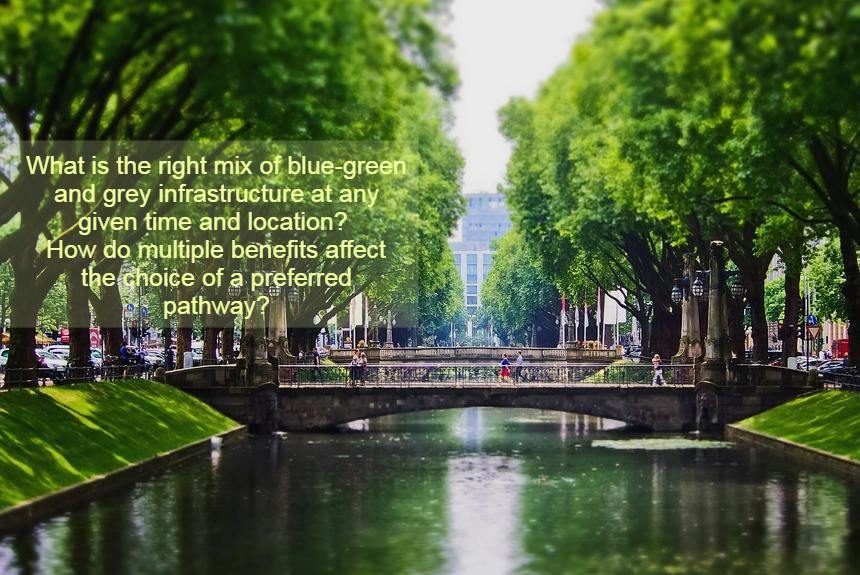Climate change is predicted to increase the flood risk of a London borough urban sub-catchment investigated in the study.
Flooding is projected to come from a 1-in-5-year storm. Large areas of the urban drainage network that are not at risk of flooding today will soon be at risk in the next 50 years, and according to the study, a possible mix of the blue-green and grey solutions is possible to manage the risk.
Grey infrastructure refers to traditional waterway systems like pipe networks, storage tanks, and floodwalls.
Blue-green infrastructure refers to infrastructure that aims to restore the natural water cycle by combining water management and green infrastructure. An example is a vegetated surface to store and retain excess stormwater.
Researchers Leon Kapetas and Richard Fenner aim to answer the following questions through the study:
- What is the right mix of blue-green and grey infrastructure at any given time and location?
- How do multiple benefits affect the choice of a preferred pathway?
The first question is addressed by applying an adaptation pathways approach at a smaller scale or urban sub-catchment. Solutions or options considered include grey pipe expansion, bio-retention cells, permeable pavements, and storage ponds, which are assessed separately and in combination.
The paper applies an adaptation pathways approach to compare alternative options for current and future flood risks.
Using standard cost-benefit assessments, infrastructure costs are compared against monetized multiple benefits accrued through each option, and the results are analyzed using existing tools and models.
The study also offers flexibility to move from one option or pathway to the next as information becomes available with time and threshold performance is met.
The researchers showed that there is a trade-off between deferring intervention until flood mitigation is needed and delivering multiple benefits associated with the interventions.
This means that the multiple pathway assessment process is crucial to determine the outcome of the climate adaptation planning.
Source:
Kapetas, L., & Fenner, R. (2020) Integrating blue-green and grey infrastructure through an adaptation pathways approach to surface water flooding. Phil.Trans.R.Soc.A378: 20190204. http://dx.doi.org/10.1098/rsta.2019.0204



Leave a Reply